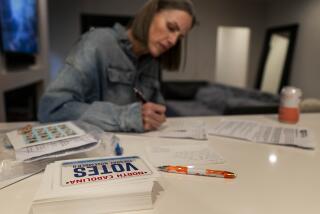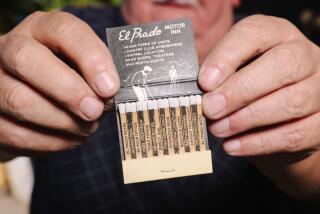Finding a Club for Post Card Fanciers
- Share via
Question: I collect post cards and would like to join a post card collector’s club.--R.C.
Answer: Our files show at least two clubs: Deltiologists of America, 10 Felton Ave., Ridley, Pa. 19078; and Postcard History Society, P.O. Box 3610, Baltimore, Md. 21214. If there are any similar California-based clubs, we’d like to hear from them and publish their mailing addresses and when and where they meet.
From everything we’ve seen on the subject, it appears that collectors prefer to concentrate on relatively old post cards--certainly those produced before World War II and, preferably, in the 1930s and earlier.
Post card historians believe the first post cards surfaced in Europe in the 1860s and in the United States just a few years after the appearance of the European productions.
The popularity of post cards in this country apparently didn’t take off right away because they were, at first, just as expensive to post as first-class mail. Only government-issued cards carried lower postage rates among the earliest American examples.
But then, just a few years before the turn of the century, the government allowed all post cards--both government and privately printed--to enjoy the lower rate. This decision quickly led to the immense popularity of the picture post card.
Over the next two decades, up to about the time of World War I, post card artwork greatly proliferated in the United States, and it is this era that has especially fascinated collectors. Post cards were used for everything from carrying advertising messages, travel pictures, political propaganda or to mark major events, such as expositions.
Prices vary greatly depending on condition and rarity. This is reflected in dealer catalogues where we’ve seen early advertising post cards priced at about $10 and up in contrast to rare designs priced at above $1,000 for a set by a particular artist.
There are so many categories of post cards that collectors recommend that individuals just starting to put together a collection concentrate either on one particular subject or one artist.
Q: I’d like to inquire about the possible value of about 250 original circus posters (with the union stamp) dated between 1920 and 1950. We are interested in framing and trying to sell them.--D.N.
A: There are a number of poster dealers in the Los Angeles area. But before you seek out a dealer, you should attempt to estimate the value of your collection. This is important because dealer prices vary widely, and sought-after circus posters can carry price tags of $100 and up.
Inquiries to collectors clubs and museums might be a good place to start in terms of putting you in touch with individuals who have some knowledge of what’s rare and what isn’t. Be sure to describe your collection in detail, including the condition of the posters.
Among collectors clubs, there is Circus Fans of America, P.O. Box 69, Camp Hill, Pa. 17011. Museums include the Barnum Museum in Bridgeport, Conn., and the Ringling Circus Museum in Sarasota, Fla.
There are several upcoming events that may interest collectors. The first is the All-American Collector’s Show Saturday and Sunday at the Glendale Civic Auditorium, 1401 N. Verdugo Road, Glendale. About 200 dealers are expected for this antique toy and advertising memorabilia show. Admission $3.
The Antique Toy Collectors Show and Sale is due Feb. 22 at the Hyatt Hotel, 8401 Sunset Blvd., West Hollywood. Admission is $2.50.


